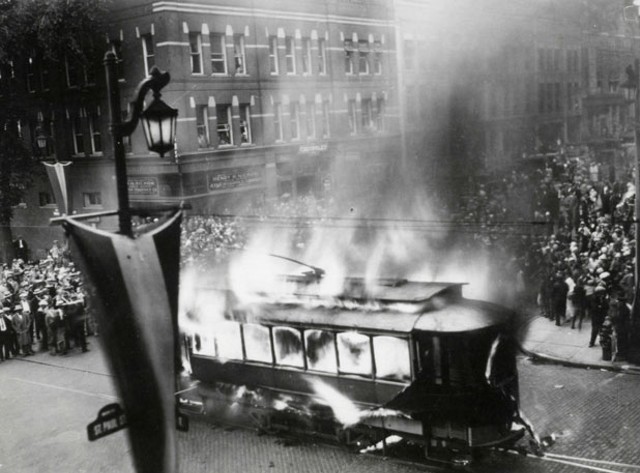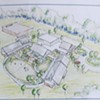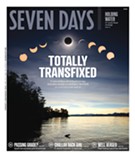Published May 28, 2008 at 1:58 p.m.
On the afternoon of August 4, 1929, more than 5000 people gathered in Burlington City Hall Park to celebrate the dawn of a new era in mass transit. At about 5 p.m., a streetcar pulled up to the corner of Main and St. Paul streets. Someone played taps on a bugle. Then two men set the car on fire.
After firemen doused the flaming trolley, Col. Frank E. Hopkins, a commander at Fort Ethan Allen, told the crowd, "We must have more quiet, rapid transportation, more modern conveniences." A gleaming white bus was christened with a bottle of Dorn's Venetian Ginger Ale. A year later, the Burlington Rapid Transit Company was offering regular service to Colchester, Essex Junction and Winooski.
Today, the buses that spelled the end of the streetcar in Burlington are no longer modern or, apparently, all that convenient. The busiest route averages just 1200 riders daily, and as a mass-transit system, the bus has "major holes," said Chris Cole, general manager of the Chittenden County Transportation Authority.
Earlier this month, a committee convened by Mayor Bob Kiss released a 13-page report on building a "sustainable transportation" network in Burlington. Among the recommendations: Bring back the streetcar.
The Energy and Environmental Coordinating Committee, known as "E2C2," envisions a system of routes that would connect Burlington's "community centers," from the airport to North and South End neighborhoods, from I-89 to the Pine Street corridor.
The streetcar is just one of seven "priority suggestions" forwarded to the city council for further exploration, based on advice from local experts, as well as information from the 1996 TriCity Transit Study. The committee's other recommendations include a shuttle terminal at I-89's Exit 14, a parking lot near the intersection of Route 7 and I-189, and reduction of the waiting time between buses from 30 minutes to 15.
That last idea, said Dan Bradley, director of transportation projects at Burlington's Department of Public Works, could cost taxpayers an extra million dollars in property taxes. He conceded, after talking briefly with E2C2, that the streetcar "does catch people's imaginations."
Indeed, the so-called Green Line seems to intrigue even those who don't think it would be an efficient or cost-effective solution to Burlington's transportation needs. Mary Sullivan, the communications coordinator at the Burlington Electric Department who served on E2C2's transportation subcommittee, said a streetcar would be a "wonderful" alternative within the city's transportation network. "We wanted to think of something outside of the box," she said.
Scott Johnstone of the Chittenden County Metropolitan Planning Organization said that, as gas prices continue to rise, the committee might be on to something with the streetcar proposal. But, he continued, city officials and the public have to decide: "Are there enough benefits to make it worthwhile?"
Johnstone said a streetcar has potential economic multiplier effects, such as increased tourism and greater investment in downtown. Other cities have seen spikes in economic development after establishing municipal streetcar service, he pointed out. Portland, Oregon, which built a line in 1997, has seen $2.5 billion in new construction projects within three blocks of the tracks. Portland now charges local businesses $500 per month to sponsor a streetcar stop.
The committee acknowledged that a workable streetcar system would require a considerable investment in time and money. The tracks on which the former line operated were torn up for scrap metal during World War II, and devising routes for a new system would require "significant study and evaluation," according to the committee report.
The committee did conclude that streetcar service should be considered a long-term objective. However, it also recommended expansion of the bus system along major corridors to "lay the foundation" for a trolley or light-rail network.
Bradley, of the Public Works Department, said that streetcars should be part of a sustained transportation planning process. "There's a progression that evolves when [planners] look at moving large numbers of peoples," he explained.
One intermediate step on the way to streetcar service might be "Bus Rapid Transit," a system in which passengers board express buses from designated platforms. Eugene, Oregon, installed bus rapid transit last year - at a cost of $25 million - after determining that "light rail" was too expensive. Ridership on the new service took off, increasing 46 percent in nine months.
But Cole, of the Chittenden County Transit Authority, said BRT might not work in Burlington. Eugene has a population of about 150,000, and its average daily bus ridership is 2700 passengers per day - more than double that of CCTA's busiest route. Cole believes Burlington's immediate transportation priority should be constructing a downtown transit center.
The committee has urged city officials formally to study the viability of a streetcar system before engaging the public in a discussion of the idea. Johnstone is aware that getting approval for new initiatives is difficult in tough financial times. But, he maintained, the committee's suggestion to revive Burlington's streetcar line isn't out of the question.
"They're not trying to redesign a transportation system," Johnstone said of E2C2. "It seems to me they're almost there to shake the establishment, and that can be healthy, if the culture of the city will embrace it."
Watch and Audio Slideshow
More By This Author
Speaking of...
-

Totally Transfixed: A Rare Eclipse on a Bluebird Day Dazzled Crowds in Northern Vermont
Apr 10, 2024 -

Middlebury’s Haymaker Bun to Open Second Location in Burlington’s Soda Plant
Apr 9, 2024 -

Police Search for Man Who Set Fire at Sen. Bernie Sanders' Burlington Office
Apr 5, 2024 -

Self-Serve Farmstands Hold Tight to Their Honor-System Payment Model
Mar 27, 2024 -

Q&A: Digging Into the Remnants of the Ravine That Divided Burlington
Mar 27, 2024 - More »
Comments
Comments are closed.
From 2014-2020, Seven Days allowed readers to comment on all stories posted on our website. While we've appreciated the suggestions and insights, right now Seven Days is prioritizing our core mission — producing high-quality, responsible local journalism — over moderating online debates between readers.
To criticize, correct or praise our reporting, please send us a letter to the editor or send us a tip. We’ll check it out and report the results.
Online comments may return when we have better tech tools for managing them. Thanks for reading.












































